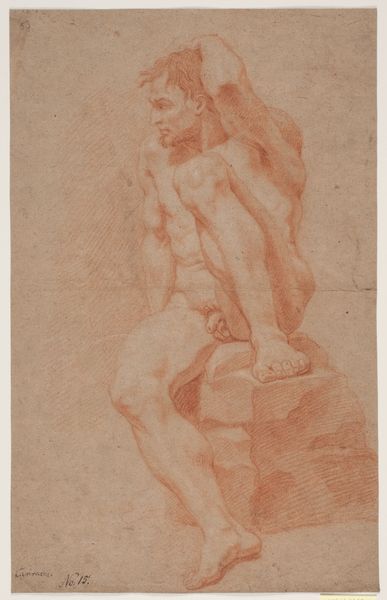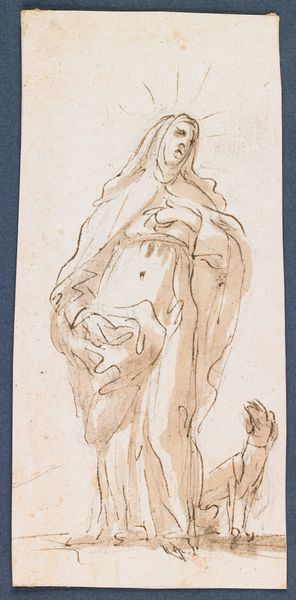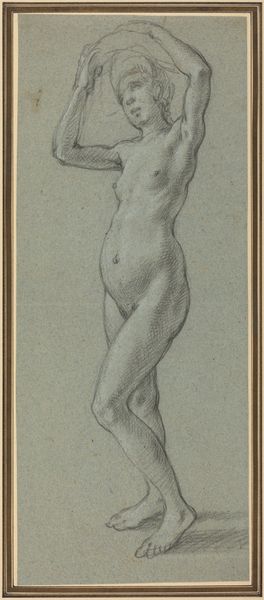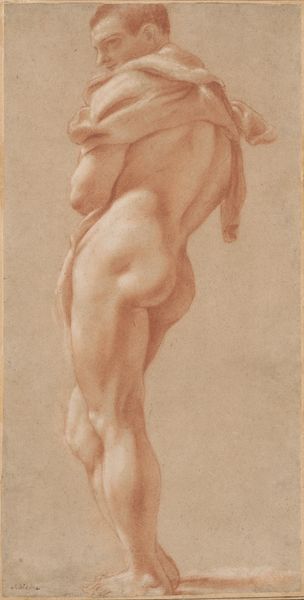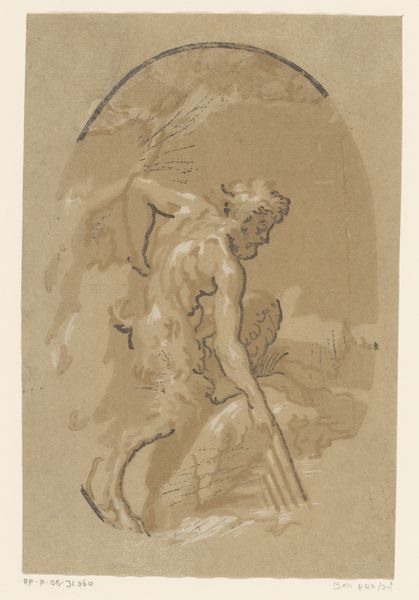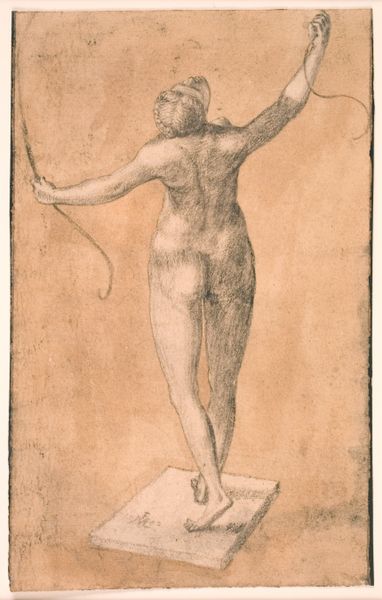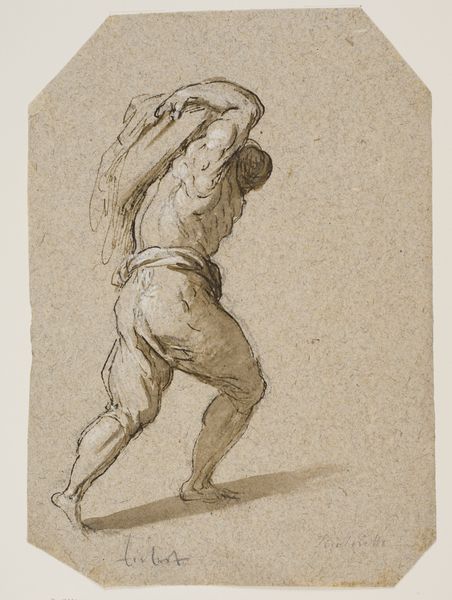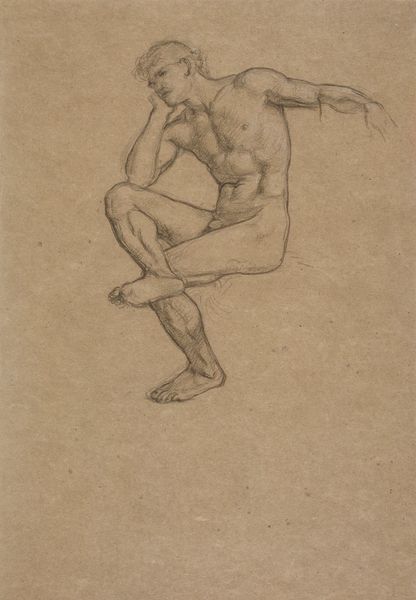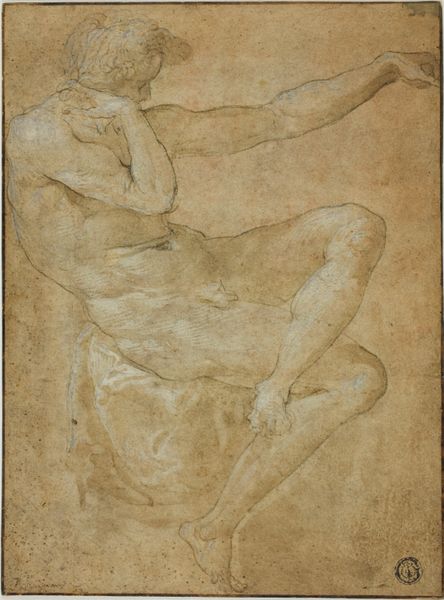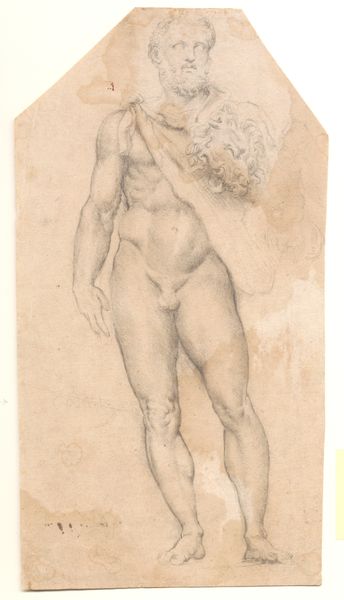
Standing Putto (recto); Saint Jude the Evangelist (verso) c. 1610 - 1620
0:00
0:00
drawing, paper, ink
#
drawing
#
charcoal drawing
#
figuration
#
paper
#
11_renaissance
#
ink
Dimensions: 268 × 151 mm
Copyright: Public Domain
This double-sided drawing from an anonymous artist features a standing putto on one side and Saint Jude the Evangelist on the other. It is rendered in pen and brown ink with brown wash, heightened with white gouache, on blue paper. The image of the putto, a chubby, winged child, gained popularity during the Renaissance in Europe. Rooted in classical antiquity, it was often used to populate religious and mythological scenes. But its revival also coincided with a humanist turn, one that increasingly valued the everyday and the human. Putti became a visual shorthand for earthly love and divine inspiration. To understand its meaning fully, we might look to contemporary treatises on art, religious sermons, and popular literature. These resources help us interpret the image of the putto in its proper social and institutional context. Art history is not just about aesthetics, but also about understanding the values and beliefs of a particular time and place.
Comments
No comments
Be the first to comment and join the conversation on the ultimate creative platform.
